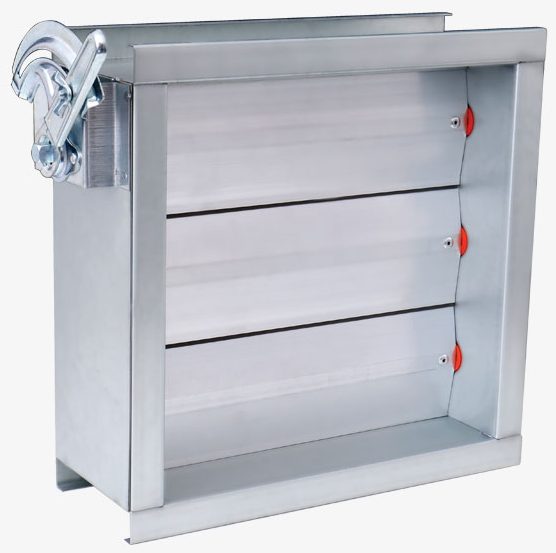
Volume Control Dampers
Motorized volume control dampers are devices used in HVAC (Heating, Ventilation, and Air Conditioning) systems to regulate the flow of air within duct work. These dampers play a crucial role in controlling the volume of air in different zones or sections of a building, allowing for more precise temperature and airflow management. Here are some key points about motorized volume control dampers:
- Purpose:
- Motorized volume control dampers are designed to adjust or modulate the airflow within ducts. This is particularly useful for maintaining proper air distribution, temperature control, and energy efficiency in various areas of a building.
- Construction:
- These dampers consist of a blade or a set of blades within the ductwork that can be adjusted to control the flow of air. The blades are connected to a motorized actuator that can open or close them based on the control system’s signals.
- Motorized Actuator:
- The motorized actuator is the component responsible for moving the damper blades. It is controlled by a building automation system (BAS) or another control system that regulates the HVAC system.
- Control Systems:
- Motorized dampers can be integrated into larger building control systems. This allows for centralized control and automation, enabling precise adjustments based on temperature, occupancy, or other factors.
- Applications:
- Motorized volume control dampers find applications in various HVAC systems, including commercial buildings, industrial facilities, and residential HVAC systems. They are especially useful in variable air volume (VAV) systems where airflow needs to be adjusted dynamically.
- Benefits:
- Energy Efficiency: By controlling airflow, these dampers contribute to energy efficiency by directing conditioned air where it’s needed most.
- Zoning: They enable zoning within a building, allowing different areas or rooms to have individualized temperature control.
- Automation: Integration with control systems allows for automated adjustments based on specific conditions, optimizing comfort and energy usage.
- Installation:
- Motorized dampers are typically installed at various points within the ductwork. The specific placement depends on the HVAC system design and the zoning requirements of the building.
Regular maintenance is essential to ensure the proper functioning of motorized volume control dampers. Periodic inspections and testing should be part of the overall HVAC system maintenance plan to address any issues promptly.